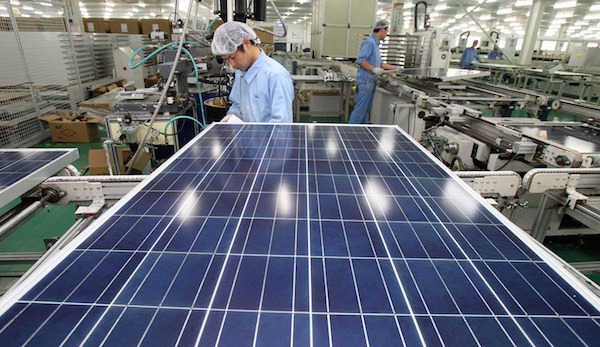
EU removes import duties on Chinese solar panels
The EU’s decision in September 2018 to remove trade controls on imported Chinese solar panels follows the USA move to increase tariffs. It also comes at a time of when international prices for panels are falling in response to a reduction of subsides for the deployment of solar photovoltaic (PV) capacity in China.
China’s emergence as a global player
China is the global leader in solar PV, in respect of both manufacturing output and installed capacity. Beginning in the early years of this century, the government introduced a number of policies to support innovation and manufacturing in a range of energy industries, of which solar PV was one. Local governments complemented these initiatives by providing companies with preferential access to land and services. By 2011, Chinese companies were manufacturing 21 GW of solar cells annually, representing 60% of the global total production and the export value of solar cells accounted for 60% of the global market. Out of the top fifteen solar PV panel manufacturers in the world, nine were Chinese companies which took a share of 30%.
Panel output continued soaring and reached 87 GW by 2017. China now accounted for 66% of global panel production and 60% of cell production, and it dominated international panel shipments for the ninth year running. Nine of the world’s top ten of panel suppliers are Chinese or linked to Chinese companies. This growth has not been without pain. The heavy policy support led to overinvestment in manufacturing capacity. Whilst this brought down prices dramatically to the advantage of global buyers of PV panels, it led to bankruptcies in China.
The dramatic expansion of the country’s installed capacity of solar PV only began in 2011 after the government introduced a generous feed-in-tariff. Even then, growth remained slow until 2013 when the EU and the USA brought an anti-dumping case against China to the WTO. The EU’s import duties were 64.9%, unless the sale price was at or above a declining threshold.
In response to these trade controls, China’s government gave further encouragement to domestic deployment. By the end of 2017, installed capacity amounted to 131 GW or 33% of the global total. This was only marginally less than the combined totals of the United States, Japan and Germany which ranked second, third and fourth respectively. In 2017 alone China installed 52 GW of new capacity. Whilst much of this capacity is at utility scale, efforts over recent years saw the capacity of distributed solar PV rise to 19 GW by 2017.
Domestic challenges
The rapid growth of installed capacity has not been matched by equivalent output of electricity. China’s solar PV installations produce much less electricity per GW of installed capacity than those in the USA. Whilst the USA has marginally better solar resources than China, the main reasons for this poor performance appear to lie in curtailment and the PV system efficiency.
Curtailment of solar PV is particularly prominent in the five underpopulated and remote north-west provinces of the country, where 40% of the installed capacity is located. Curtailment in 2017 reached 22% in Xinjiang, 20% in Gansu and 9% in Shaanxi. Ningxia and Qinghai performed better with curtailment levels of 6%. The sources of the curtailment of the solar PV installations include the remote location of many installations, the paucity of flexible sources of power to balance the intermittency of solar PV, and the systems for dispatch and grid management. In addition, the dominance of utility scale over distributed installations limits flexibility. Technical deficiencies and poor maintenance also undermine system performance, as does the accumulation of dust and the filtering effect of air pollution.
A further downside of the rapid expansion of capacity has been the cost to the government of the feed-in-tariffs, for this cost was not passed on fully to end-users. As a result, the renewable energy fund that covers both wind and solar energy is reported to be more than US$ 15 billion in debt and many project developers have not received their subsidy.
China’s policy reaction, and US and EU trade measures
In reaction to these challenges, China’s government announced on 31st May 2018 that feed-in tariffs for all solar PV projects would be reduced, except for projects developed for poverty alleviation. In addition, quotas for new PV capacity to be installed in 2018 would be highly restricted. The aims of these measures are to reduce the subsidy burden on government, ease the problem of grid integration, introduce market forces and boost corporate business performance. Non-Chinese PV manufacturers will find their profits squeezed even further unless they are protected by import controls.

